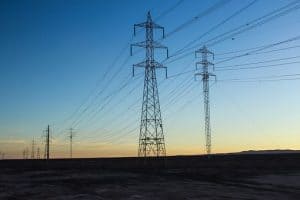[fusion_builder_container hundred_percent=”yes” overflow=”visible”][fusion_builder_row][fusion_builder_column type=”1_1″ background_position=”left top” background_color=”” border_size=”” border_color=”” border_style=”solid” spacing=”yes” background_image=”” background_repeat=”no-repeat” padding=”” margin_top=”0px” margin_bottom=”0px” class=”” id=”” animation_type=”” animation_speed=”0.3″ animation_direction=”left” hide_on_mobile=”no” center_content=”no” min_height=”none”]

Huffington Post
30 May 2013
America’s power system is too vulnerable to meet modern challenges — a harsh reality underscored by Hurricane Sandy, which left 8.1 million people in the dark for extended periods. Yet, widespread outages should no longer come as a surprise. The American Society of Civil Engineers gave the country’s electrical infrastructure a “D” grade in 2008. Years earlier, a Clinton-era energy secretary described America as “a superpower with a third-world grid.” Even though power system vulnerability has been obvious for over a decade, little has been done to address this critical weakness. If the United States wants to stay globally competitive, then the country must finally invest in the creation of a 21st-century power system capable of driving sustained economic growth.
Any power system overly dependent on centralized generation and long-distance transmission is inherently susceptible to massive failures, and our system has proven this time and again. Each day, nearly 500,000 Americans spend at least two hours without electricity, while brownouts and blackouts grind economic activity to a halt — costing the country up to $188 billion annually. Monetary losses from outages will only climb higher in the future given that economic activities increasingly demand reliable electricity. High-tech companies need consistent, quality power to protect manufacturing equipment, and almost all businesses require steady power for operating computers and other information technologies. Unfortunately, the nation’s current power system is incapable of meeting modern reliability needs as large blackouts are becoming not only more frequent but also more severe.
Fortunately, the U.S. has ready examples for improving its power system. Germany and other European countries have already shown that modern power systems are both technically possible and economically viable. Investing in an intelligent grid that integrates significant amounts of clean local energy enhances system reliability — minimizing economic losses from outages. The German power system, which incorporates enough rooftop solar to meet half the country’s midday energy needs, set a global reliability record in 2011 with only 15.31 minutes of downtime. What’s even more impressive is that Germany — the world’s fourth largest economy and home to a heavy industrial base — demands enormous amounts of reliable power, and distributed renewables have delivered. Similarly, renewables provide more than 40 percent of Denmark’s electrical generation, and their grid is markedly more reliable than in the United States. On average, the U.S. has three times as many outages as Denmark with each outage lasting fourteen times as long. In other words, the U.S. spends about 50 times as long in the dark even though Denmark gets 40 percent of its power from renewables.
A modern power system takes advantage of the latest technologies to meet the growing demand for reliable energy. Increased distributed generation will protect homes, businesses, and industries from cascading blackouts by mitigating the impact of any single power station or transmission line failing. Intelligent grid solutions — such as demand response, advanced inverters, and energy storage — enhance the ability of the grid to ride through potential disruptions, while locally balancing all vital dimensions of the power grid: energy, voltage, and frequency. Importantly, distributed generation integrated with intelligent grid solutions delivers power without sags, surges, or other disruptions in voltage or frequency that currently plague manufacturing lines and sensitive electronics. In addition, modern grids lay the foundation for standalone energy “islands” to provide continuous power for essential services during widespread grid failures, which several universities and research facilities successfully relied on for power during Hurricane Sandy’s costly and prolonged outages.
Despite broad claims that renewable energy is unreliable and expensive, the exact opposite has been proven true. As Germany and Denmark have shown, renewables are intermittent but not unpredictable, and superior grid reliability can be achieved even with far higher penetration levels of renewables than the U.S. is anticipating within the next 10 years.
A failure by the U.S. to invest in a 21st-century power system would prove significantly more expensive than the cost of transitioning to a modern power system. The Galvin Electricity Institute estimates that the annual cost of power outages is more than double the annual cost of preventative intelligent grid investments. To even maintain our antiquated power system, massive investments estimated at $673 billion are needed by 2020. Why not invest this money into the creation of a modern power system that is actually capable of meeting the full set of America’s energy needs?
The Clean Coalition has developed a roadmap for the United States to achieve a timely and cost-effective modern energy system. The roadmap includes summaries of the key technologies and policy solutions for getting there efficiently. As long as the nation continues to rely on centralized energy generation and over 280,000 miles of transmission lines, the power system will remain overly vulnerable to widespread failures from accident, weather, and intentional attack. It’s time for America to invest in a 21st-century power system, rather than spending hundreds of billions of dollars maintaining a pitifully outdated one.[/fusion_builder_column][/fusion_builder_row][/fusion_builder_container]

Leave a Reply